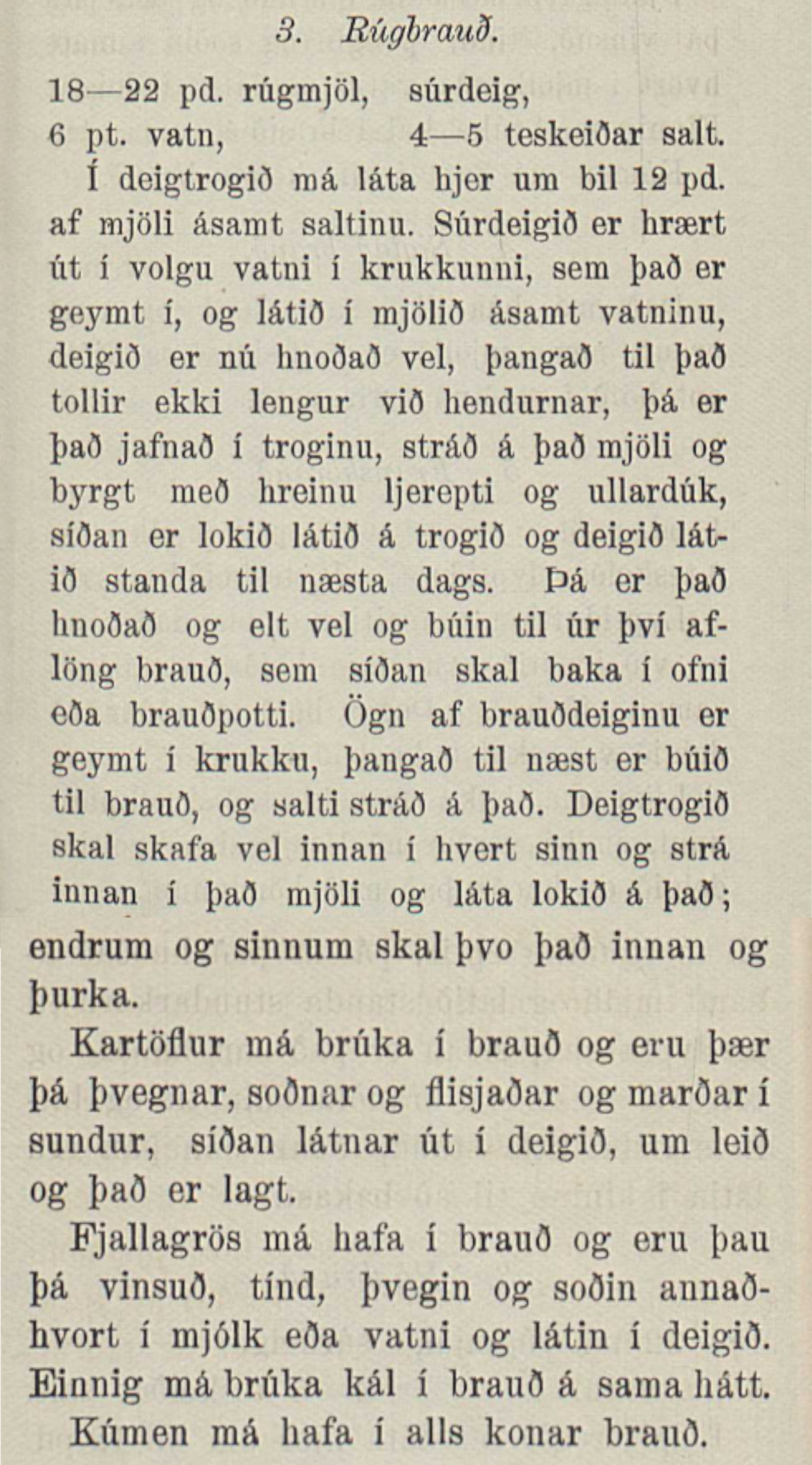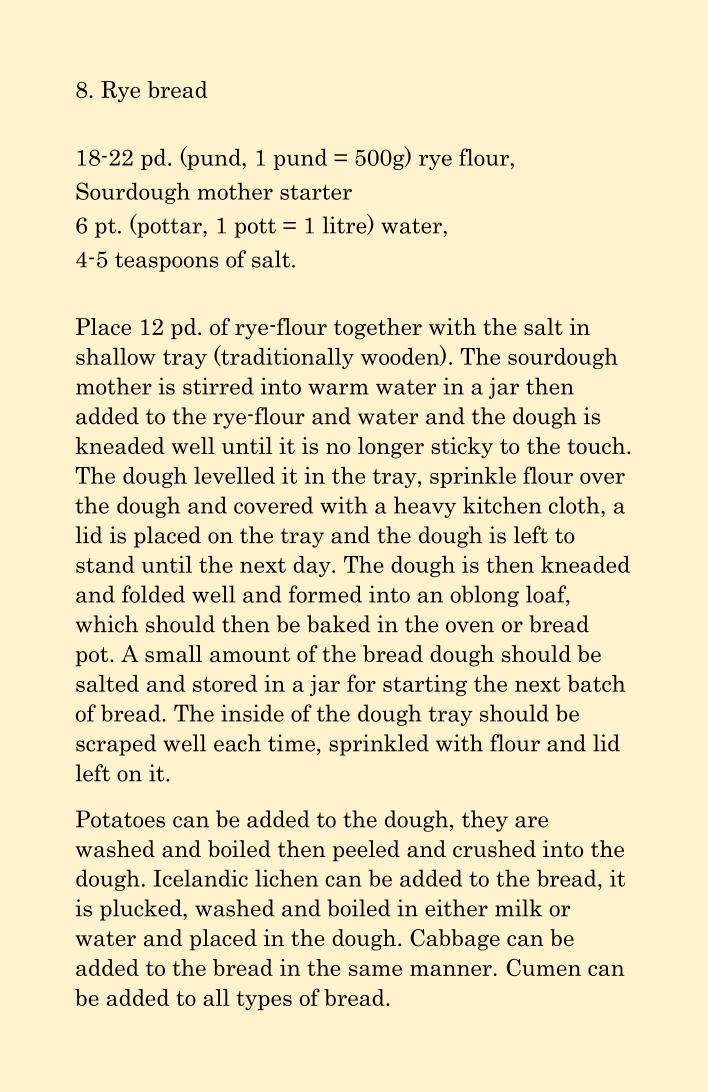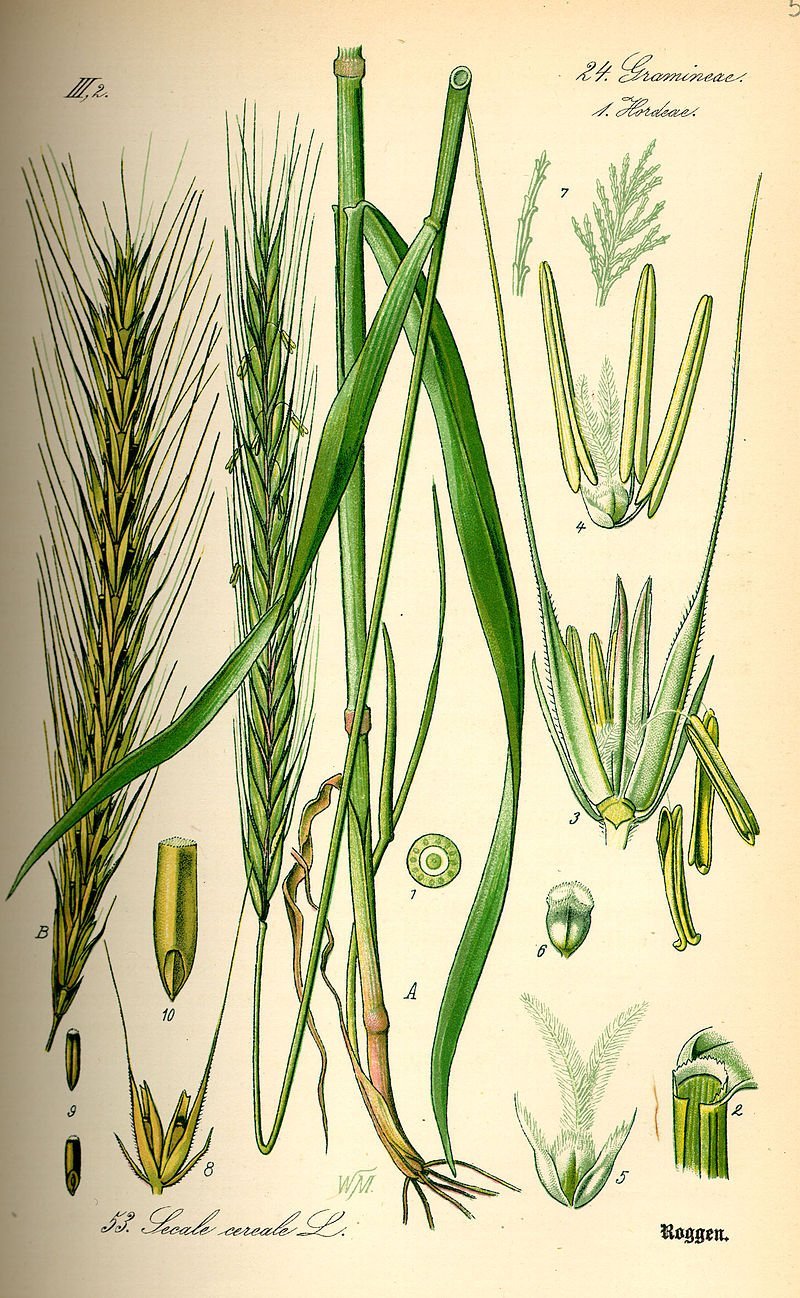Rye bread and the festival of Þorri
The pagan festival of Þorri, still celebrated in Iceland today, revolves around traditional Icelandic food, one of these being bread and flat cakes made from rye.
Rye (Secale cereale) is a cereal grass that originated in the Levant. It is suggested that rye became a grain food as a result of Vavilovian mimicry, which is where a crop weed evolves to resemble the crop plant it has infested and eventually becomes a grain crop itself. Wild rye is a perennial plant whereas cultivated rye is an annual plant which grows fast and can reach 120cm before the end of summer. Unlike wheat and barley, rye has good frost tolerance which accounts for its popularity in Scandinavia.
Apart from bread, rye is used to make drinks (rye whiskey, kvass), medicine and in mushroom production. Traditionally rye is used in 'falun red' paint that is often seen on farmhouses in Sweden. Rye has less gluten than wheat and is higher in fibre.
Rye bread was first mentioned in Iceland in the the 18th century and was the main cereal product, together with barley and oats, in the 19th century. Here is a recipe for rye bread taken from Elín Eggertsdóttir Briem book Kvennafræðarinn in 1891:


